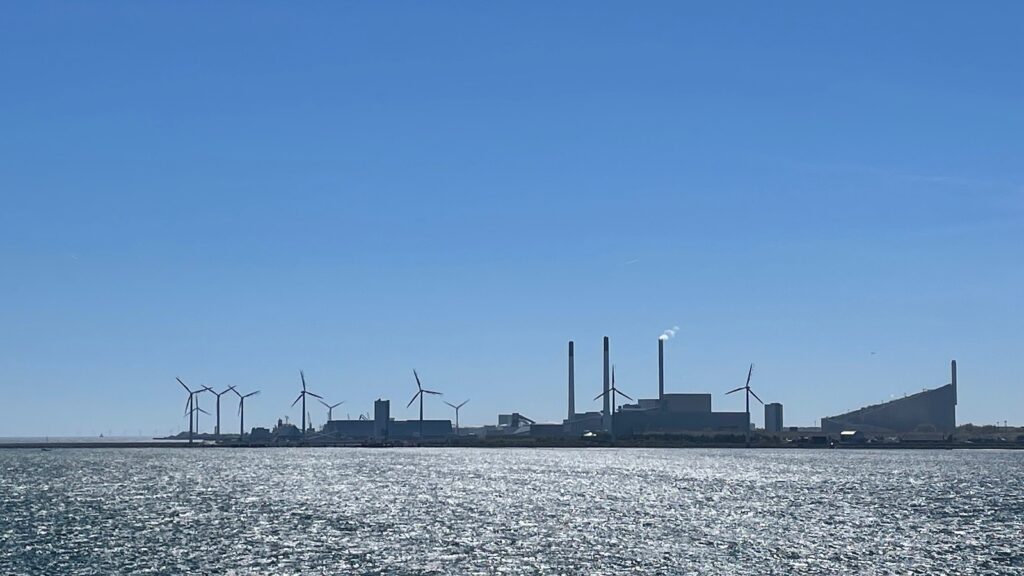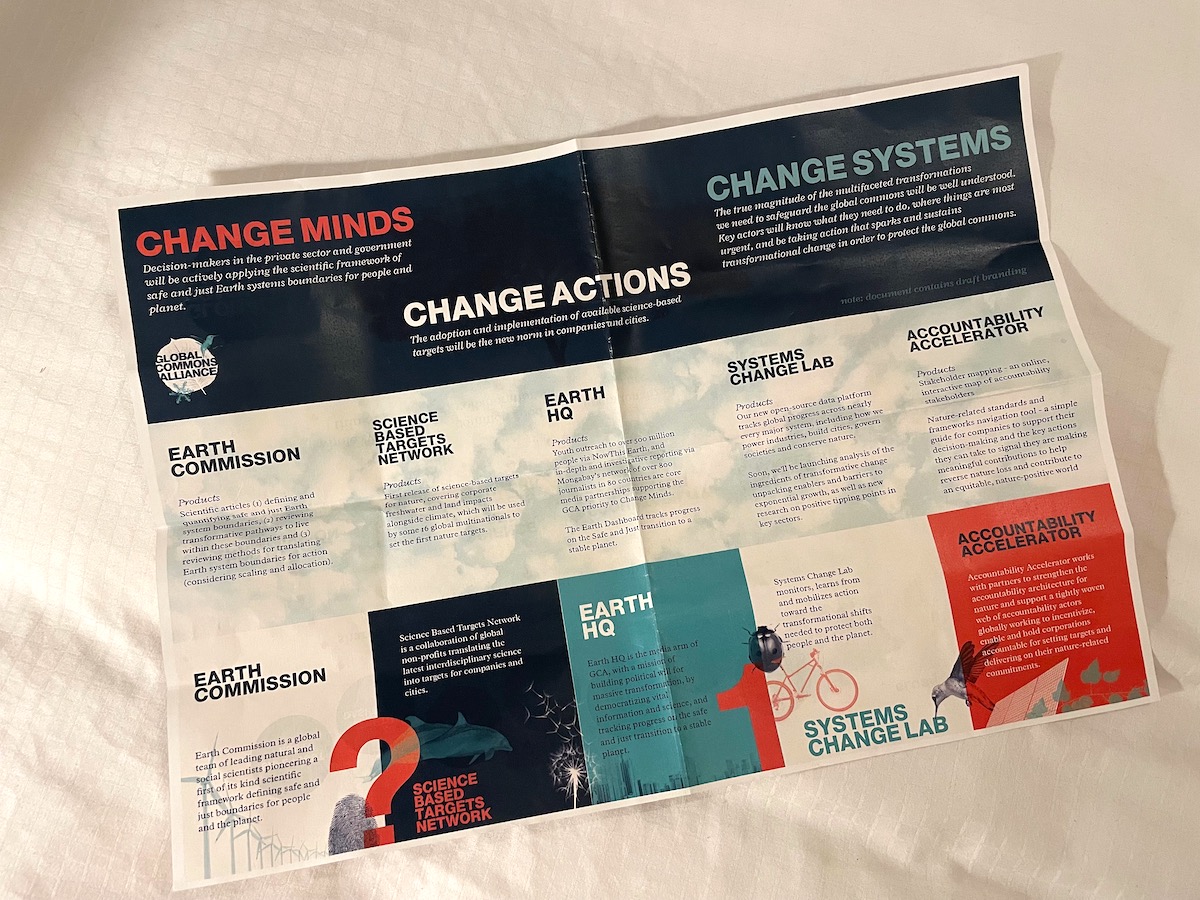The Tiina and Antti Herlin Foundation, together with other Finnish environmental funders and influencers, met with key persons from the international Global Commons Alliance network. From which elements is the ambitious network building systemic change?
Our foundation’s project work builds and maintains networks and projects across borders that help solve the climate crisis. Last May, we headed to Copenhagen, where key persons who work for the network project known as the Global Commons Alliance had gathered from all around the world.
The project’s environmental work has a very strong scientific basis, and, through systemic scaling, it aims for a safe and just world for both people and the planet. That late spring Monday in Copenhagen offered us, as well as other Finnish and Danish colleagues interested in the work, the opportunity to hear the latest news on the project, which our foundation has funded since 2020.
Project partner for systemic change
The Global Commons Alliance (GCA) is our foundation’s first partner to receive funding in accordance with our new strategy. The project was still largely on the drawing board and highly ambitious in its scope in 2020 when it passed a careful evaluation and then received EUR 300,000 in funding from the foundation. Since the very beginning, the majority of the project’s funding has come from larger European and American environmental funders, such as Oak Foundation, Climate Works, MAVA Foundation and Porticus.
In accordance with our foundation’s strategy, we consider in all funding decisions the potential social capital and networks that our foundation can offer to the grant recipient, in addition to the grant sum. The GCA is an excellent fit for our foundation in this regard, as it has a strong basis in cooperation and produces many necessary tools for the private sector in particular. At the same time, our foundation has had the opportunity to engage in direct discussions with large international actors, which has provided valuable insight into international foundation work and the various ways of organisation and funding around the world.
The most important reason for the GCA’s partnership is, however, a strongly shared understanding that an incredibly complex global challenge – scenarios arising from human activities that threaten the planet’s carrying capacity and the lack of solutions – requires systemic and almost as equally complex solutions. This is exactly what the GCA is: an entity that is difficult to even explain in a single blog post! In short, it is an ecosystem where its different parts feed each other material and maintain close contact with one another, but which each have their own aims, partners and target groups, as well as their own role in furthering systemic change.
Science-based targets for nature – and concrete tools to support systemic change
The GCA’s work is based on the best research in the world, backed by the research team Earth Commission. With professors Johan Rockström, Joyeeta Gupta and Dahe Qin at the helm, the multidisciplinary group has created a global framework that determines safe and just boundaries for people and the planet, in order for us to avoid crossing irreversible “tipping points” and to achieve a more stable and sustainable condition for the planet than we have today. Together, the group of researchers wrote an article on safe and just Earth system boundaries, which was recently published in the scientific journal Nature.
The scientific overview produced by the Earth Commission, in turn, provides a springboard for the Science-Based Targets Network (SBTN), an entity made up of over 50 international organisations and non-commercial operators. The SBTN produces tools with which companies and cities can set, measure and report science-based targets for nature. The targets concern topics such as water and land use, as well as the city- and company-specific impacts of the loss of biodiversity. Trailblazer companies and investors are already eagerly anticipating the completion of this work. The connection between loss of biodiversity and the climate crisis and other environmental problems is a recognised fact that we want to tackle effectively.
As opposed to greenhouse gases, however, quantifying the above-mentioned environmental impacts is significantly more challenging and highly local; it is difficult to create uniform international indicators quickly and with quality. The first three “steps” in setting land use and water cycle impact targets have been recently published, and they have been piloted in both Finland and elsewhere.

In order for targets set using the tools produced by SBTN to remain sufficiently ambitious and for those targets to be realised in action, the GCA has also created their new Accountability Accelerator. Its job is to offer companies the tools which can help change science-based commitments into uniform actions.
In addition, the GCA’s projects include the Systems Change Lab, which evaluates and creates overviews about the most important required systemic changes, and offers information for decision-makers in every sector from its open-source platform. And because every change achieved by mankind is always, ultimately, the work of a group of individuals, the GCA has a subproject which aims to communicate the information gained from the project to people all over the world in an understandable form. This subproject is called Earth HQ.
We proudly continue to fund the GCA’s ambitious work
The broad entity described above was presented in Copenhagen for the very first time for some people, so it was a good thing that an entire evening had been booked for the event. We were able to ask questions and both solidify and deepen our understanding of the project’s activities and hear, among other things, about the launch of the Accountability Accelerator. We were also interested to learn more about what kind of systemic changes the abstract-sounding Systems Change Lab has mapped out: over 70 of these changes have been listed, and there is already data on change indicators in the sectors of traffic, industry and financing.
The Finnish delegation’s shared conclusion at the end of the evening was something along these lines: this is quite a vague project – and that’s exactly why we like it! We know well the scale and messiness of the problems at hand, and so, the best options for solutions are likely to be those projects that rely on extensive international cooperation, look at the system holistically and best tolerate vagueness.
There have been many clear examples in Finland and among the foundation’s stakeholders of the need for science-based targets for nature for corporate actors. The GCA does wonderful work, and we are proud to continue funding and investing in them in ever greater amounts. We also take the Earth’s system boundaries into account in all of our other activities, and we hope that, soon, everyone else will too.
Photos: Anna Herlin

Anna Herlin is our foundation’s Head of Development.

